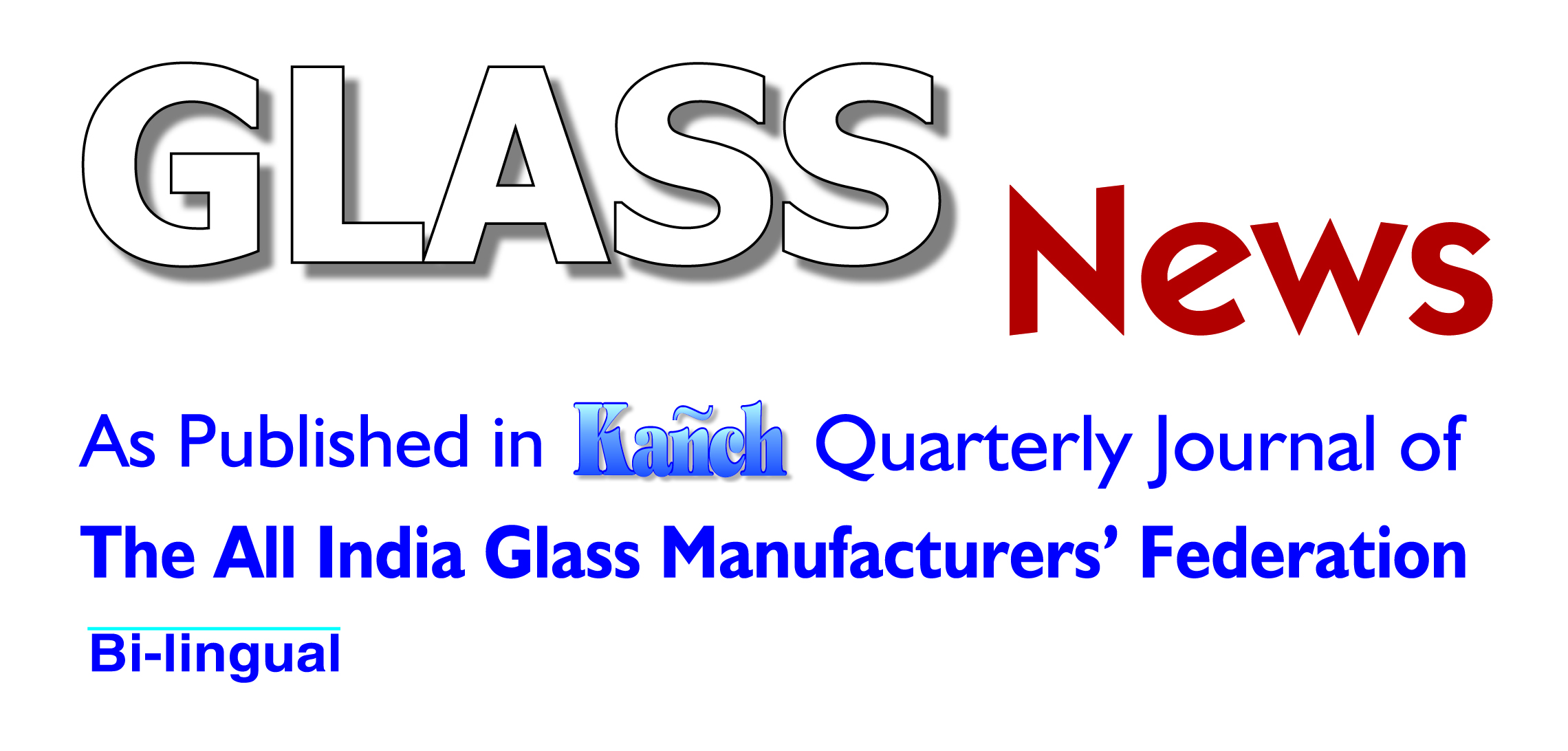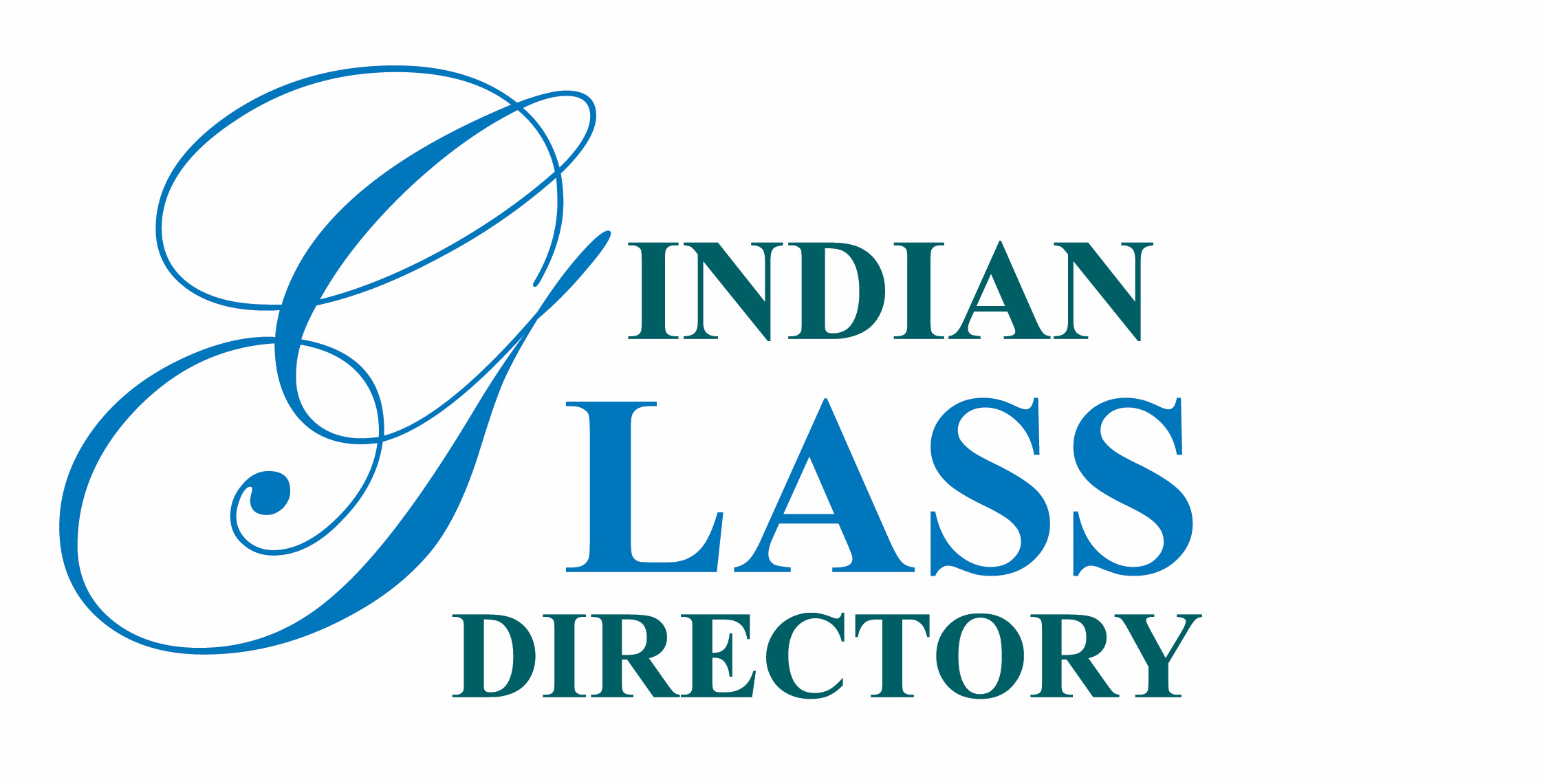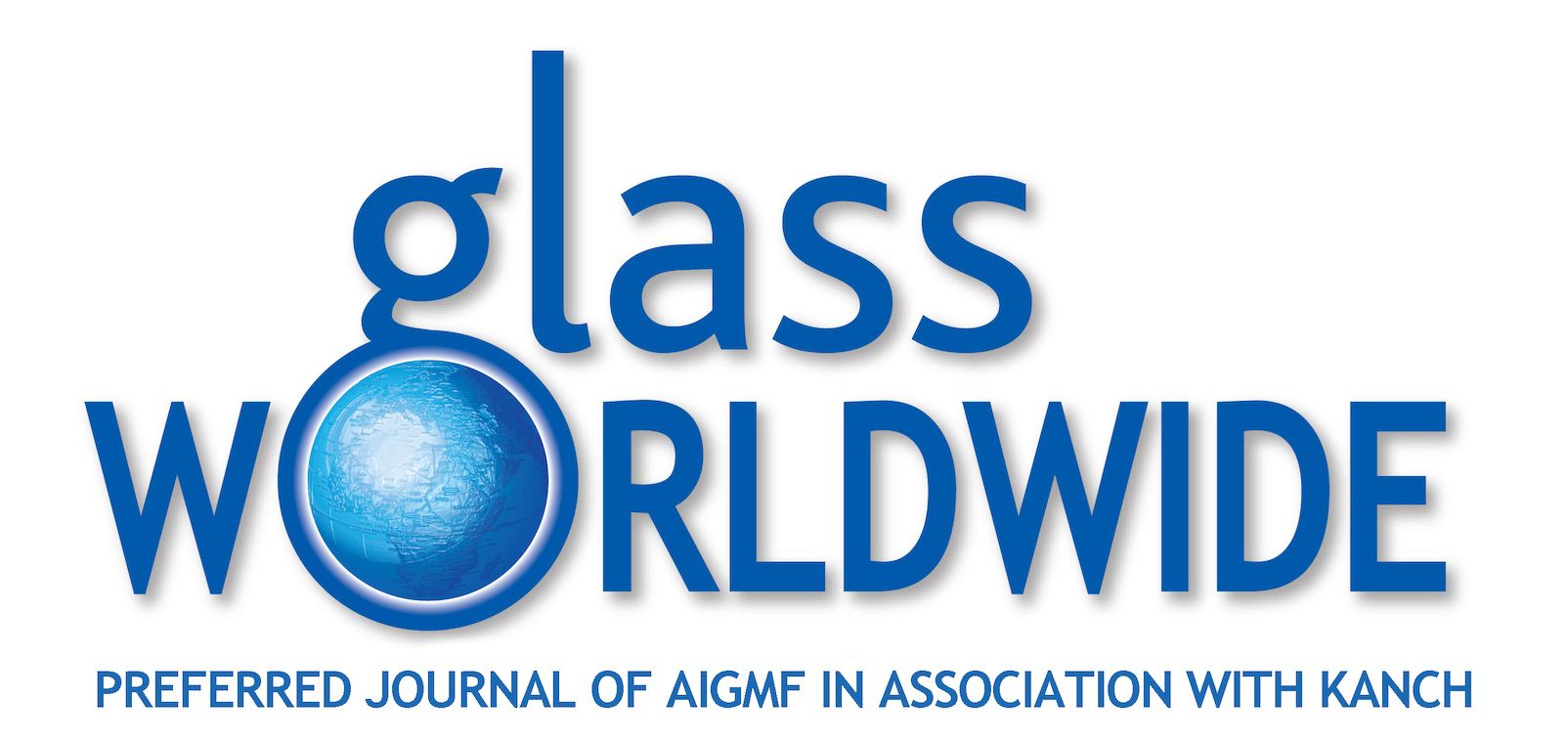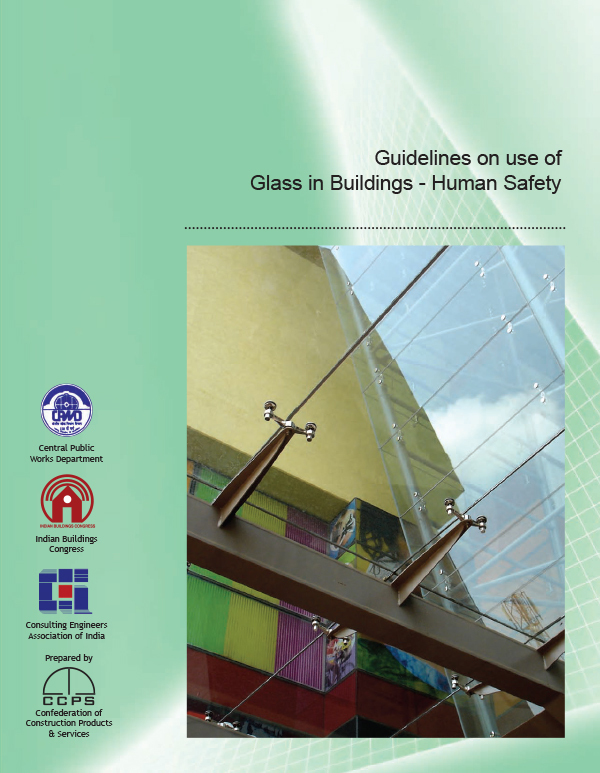Guidelines on use of Glass in Buildings - Human Safety
The Confederation of Construction Products and Services (CCPS) with the support of AIGMF released “Guidelines on use of Glass in Buildings - Human Safety” Third Edition: March 2013 (With modified sketches and suggestions for fire safety) and its Reprint in December 2015
In the modern lifestyle, increased Glass use in buildings offers many advantages. Those who spend more time indoors have intuitively understood benefits of improved daylight and vision on human psychology and health, and recent research findings underscore these indisputably. However this increased use of glass in Indian buildings is not without risks. Wrong selection of glass type is widespread and does result in increased heat gain/loss in buildings and the higher risk of injuries to humans. These are side effects that the building industry is only recently beginning to recognize in India.
The Energy Conservation Building Code 2007, prepared by the Bureau of Energy Efficiency that sets minimum efficiency standards for external wall, roof, glass structure, lighting, heating, ventilation and air conditioning of commercial buildings, is a good beginning in the area of energy conservation. CCPS was also actively involved in the preparation of the ECBC. However the risk of human injury associated with the increased glass use was out of scope of the ECBC, and remains unaddressed by this or any of the previous standards.
The “Guidelines on Use of Glass in Buildings - Human Safety” thus address a very important need in the industry. These Guidelines, for the first time in Indian construction industry, have been prepared using the consensus process entirely led by the private sector, and supported not only by the industry but also the government and other stakeholders.
The process has involved the stakeholders in preparing these guidelines through the Steering Committee, which has decided the scope and the methodology, and at each stage suggested the changes and approved the drafts. In order to ensure the integrity of the process the changes at each stage were discussed and minutes have been documented. The meetings have been held at Delhi, Mumbai and Bangalore, so as to ensure the participation of various organizations and professionals throughout India.
Finally for a period of one month the draft guidelines were made available for public review. The guidelines have been sent to over 1000 architects, builders, contractors, government officials from municipalities, development authorities and others for comments. The feedback received has been presented to the Steering Committee and the final draft in the form of this publication has been approved in the steering committee meeting held on the 2nd November, 2007.
A decision has also been taken to set up a review mechanism for regularly updating the guidelines in view of changes in the building environment and capabilities in the industry. This will ensure that the document remains updated and answers the need of times in the future also.
We would like to thank all the members of the Steering Committee, special invitees and all those who have taken some time out from their busy schedule to contribute to the making of this document. Without their interest and efforts, this guideline would not have taken shape. We like to thank the Secretariat at CCPS that has worked to research and draft and redraft the document; and has coordinated and brought on one platform a very distinguished Steering Committee.
We believe that this document will be helpful to all those who are specifying glass for use in buildings and those who are manufacturing and processing glass for buildings and ultimately will help us improve safety and well-being of the users.
We will look forward to your comments and suggestions for improvements in days to come.
Status of Implementation of Glass Guidelines
Code of Practice- Part 4 Safety related to Human Impact(IS 16231- Part 4: 2014)
NBCC Order No. AGM/Safety/2011-12/311 dated 25.01.2012
Airport Authority of India Technical Instruction No. 86 dated 20.01.2012
Haryana PWD (B&R) Memo No. 5535-47/WI dated 19.08.2011
Rajasthan Housing Board, Jaipur Office Order No. 176 dated 08.03.2011
Govt. of Rajasthan, Office Order No. F.10(7)UDD/3/2009 dated 18.01.2011
Delhi Development Authority OM No. EM/(10)/2010/Circular/Vol III/4671 dated 29.11.2010
Govt. of Delhi, PWD OM No. E-in-C/W/NMET/2010/5708 dated 25.11.2010
Andaman PWD – OM No. Arch-07/2009/3828 dated 21.12.2009
Greater Hyderabad Municipal Corporation Circular No. –Glass/TPS/HO/ GHMC/2009 dated 10.11.2009
Govt. of Andhra Pradesh- G.O. Ms No. 205 dated 27.02.2009
Minutes of the meeting held under Member, Planning Commission on 12.12.2008
Greater Hyderabad Municipal Corporation letter dated 31.12.2008
Town & Country Planning, Govt. of Andhra Pradesh letter dated 20.08.2008
Government of Manipur order dated 05.08.2008
President's Message
The Federation
Zonal Associations
Executive Committee
Office Bearers
Co-opted Members
Past Presidents
Partners
Somany Conference Hall
Glass Awards
List of Holidays - 2024
List of our Members
Become a Member
Events
Future Events
Past Events
Benefits of Glass Packaging
Contact Us
Office Address
Query Form







